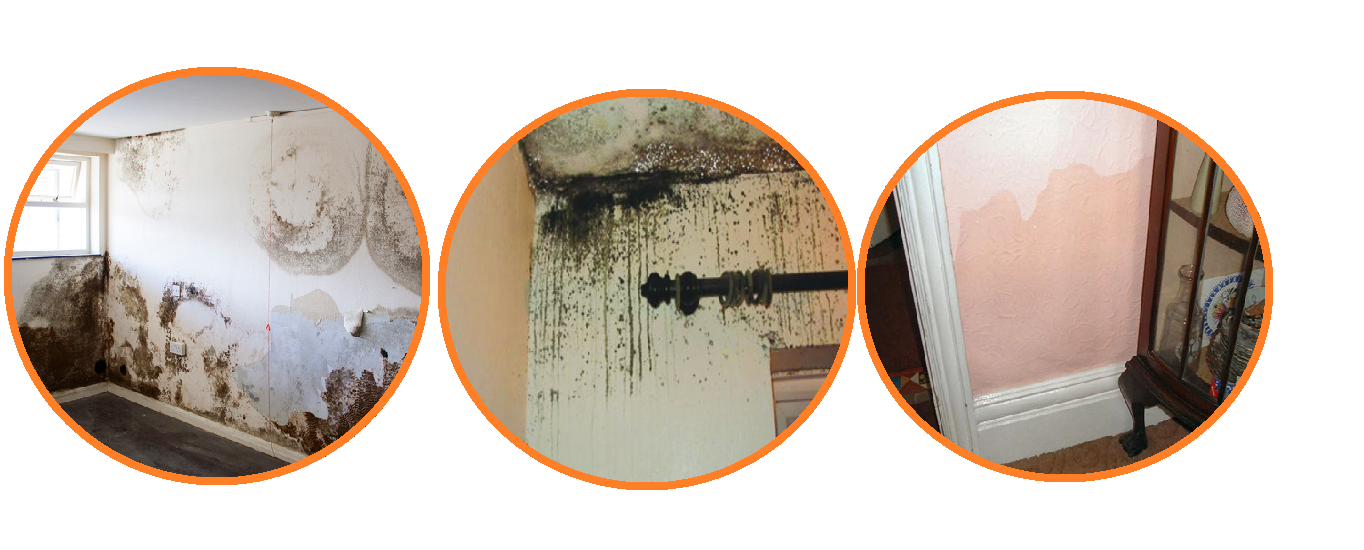Our team specialises in damp proofing and boasts extensive expertise in the identification and effective treatment of rising damp. We routinely address rising damp concerns in residential and commercial properties throughout the London area.
Rising damp ranks among the most prevalent forms of damp issues faced by property owners in the UK, particularly those residing in older homes. Despite its widespread occurrence, many homeowners lack knowledge about the telltale signs, causes, treatment options, and preventive measures.
In light of this, we've curated a helpful FAQ guide to address the most common queries related to rising damp. Our aim is to equip you with valuable insights into this problem, enabling you to understand it better and take informed action if you encounter it on your property.

Rising damp FAQs
What is rising damp?
Rising damp refers to the gradual upward movement of groundwater in the lower sections of walls and ground-supported structures, primarily driven by capillary action. While extreme cases have reported rising damp reaching heights of 5 meters, typical instances involve a rise of about one meter.
Like all forms of dampness, if left untreated, the excess moisture from rising dampness can wear away at the structural integrity of the affected area, resulting in potentially extensive and dangerous issues with your property’s overall construction.
What are the signs of rising damp?
Rising damp can manifest as a water stain like a high-tide mark on wallpaper and interior surfaces. In severe cases, it may cause paint to blister and plaster to deteriorate. Damp walls also create conditions favourable for mould growth, which, coupled with elevated humidity, can pose health risks for occupants.
Externally, you might observe a damp area near the base of walls, often accompanied by deteriorating masonry, such as fretting and crumbling. Look out for these typical signs on both internal and external walls:
Internal walls: water tidemark, efflorescence, paint deterioration, peeling or bubbling paint, peeling or bubbling plasterwork, and rotting timber skirting boards.
External walls: efflorescence, water tidemark, fretting brickwork, crumbling mortar
Key telltale signs of rising damp include:
- Tidal marks or damp patches at low levels (under 1.2-1.5 meters)
- White, floury salts (efflorescence) like nitrates, chlorides, and sulphates on the wall (uncommon from other water sources)
- Fungal decay in skirting boards
- Elevated moisture readings at low levels
- Spotting these signs helps in the early detection and effective management of rising damp issues.
What causes rising damp in homes
Rising damp is the result of moisture being pulled upward from the ground into porous building materials like brick, stone, earth, and mortar through capillary action. This moisture subsequently evaporates from either the inside or outside of the wall, drawing more moisture from below. The height to which this moisture ascends is influenced by the wall's nature and the rate of evaporation, typically ranging from 0.5 to 1.5 meters above ground level.
The only way rising damp can be stopped is by introducing an impermeable horizontal barrier at the base of the wall. This barrier is commonly called a dampcourse.
What is the rising damp treatment cost?
The cost of rising damp treatment is contingent upon your property's size and the extent of the issue. For a precise quotation, please reach out to us to schedule a site survey. Following an in-depth assessment to gauge the problem's scope and severity, we'll furnish you with a no-obligation quote.
Why damp proofing is essential for your property
Explore the critical importance of damp proofing for your property. Learn how damp proofing can safeguard your home from the detrimental effects of moisture infiltration, from sagging ceilings to heating costs.
Can rising dampness cause health issues?
The presence of rising dampness can lead to the emergence of mould spores, often coupled with condensation, which can exacerbate symptoms in individuals with conditions such as eczema and asthma.
Our approach to damp treatment in Perth
Get acquainted with our comprehensive approach to damp treatment in Perth and the surrounding areas. From professional surveys to tailored solutions, we outline how we tackle the issue to restore the health of your property. For a damp survey or solution contact us today.






